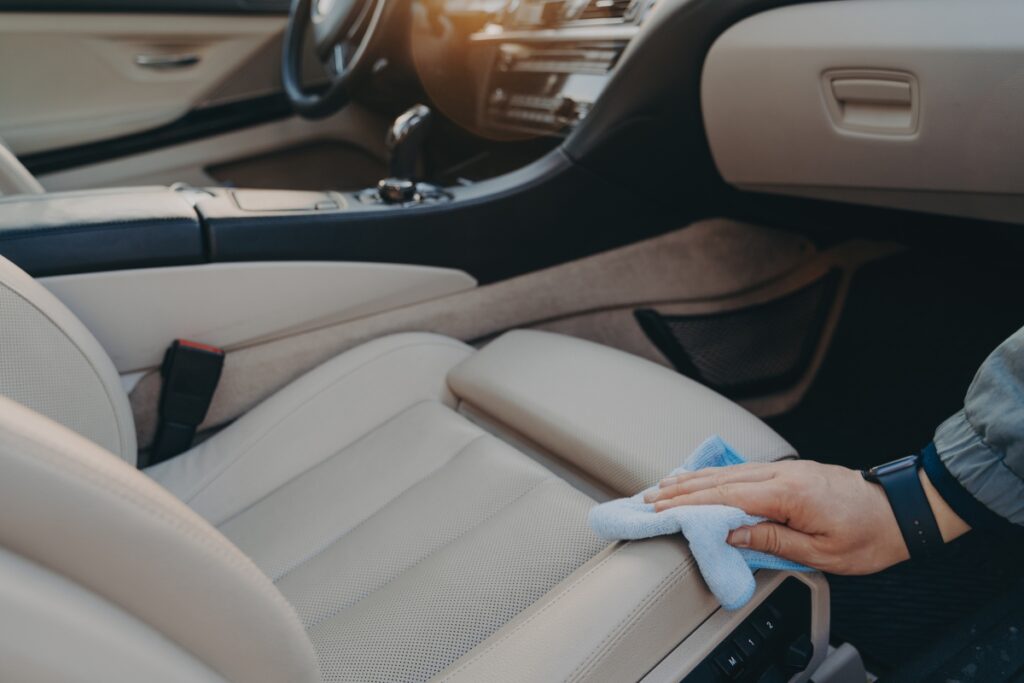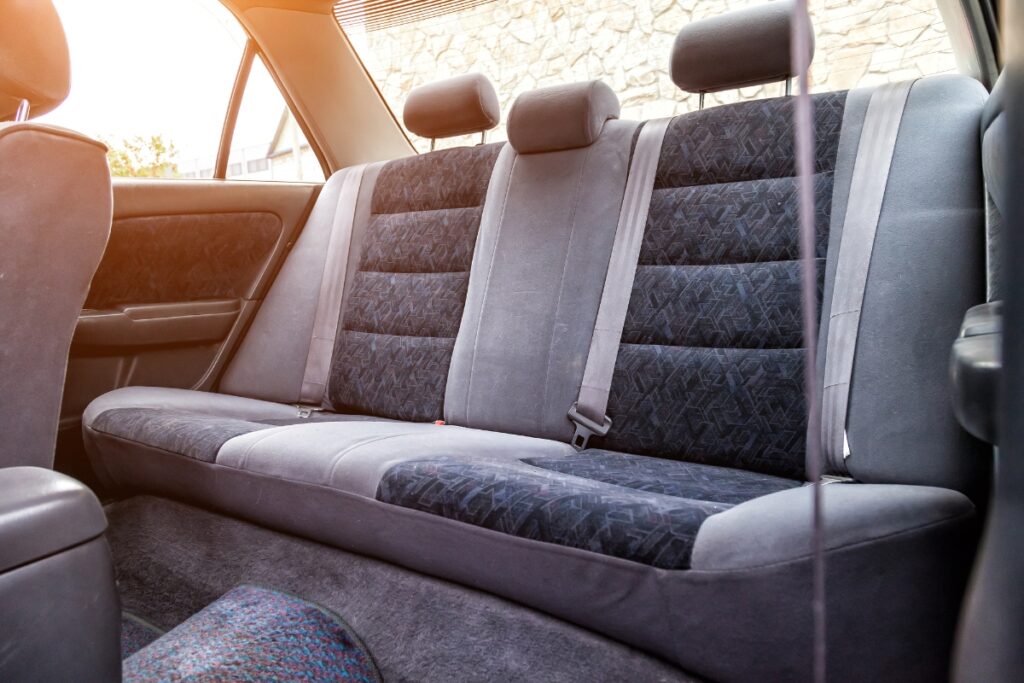
Keeping your Car Seat Cleaning is more important than ever. Not only does it help maintain the aesthetic appeal of your vehicle, but it also contributes to the overall hygiene and longevity of your car. Over time, car seats can accumulate dust, dirt, spills, and even stains, making them look worn and unpleasant. The good news? You don’t need to spend a fortune on commercial cleaners or visit a professional car detailer. In this article, we will show you how to use three everyday household items to clean your car seats effectively and affordably.
Key Takeaways:
- Learn how to clean your Car Seat Cleaning using common household products.
- Discover the best techniques for dealing with various stains and dirt.
- Save money and keep your car looking new with easy-to-follow steps.
Why Is Car Seat Cleaning Important?
Before diving into the cleaning process, let’s discuss why car seat cleaning matters. When your car seats are dirty, not only does it affect the appearance of your vehicle, but it can also lead to unpleasant odors and even health issues. Dirt, bacteria, and allergens trapped in your seats can contribute to respiratory problems, especially if you have allergies or asthma. Regular car seat cleaning helps eliminate these risks, ensuring a safer and more comfortable ride.
The Best Household Items for Car Seat Cleaning
You don’t need specialized products or harsh chemicals to clean your car seats. Instead, three common household items can get the job done without any hassle. Let’s take a closer look at them:
- Baking Soda
- Vinegar
- Dish Soap
These items are not only effective but also environmentally friendly and budget-conscious. Let’s break down how each one works and how to use them for your car seat cleaning needs.
1. Baking Soda: The Ultimate Odor Fighter
Why Baking Soda?
Baking soda is a versatile and powerful cleaning agent. It’s known for its ability to absorb odors and lift stains. Whether you have cloth or leather seats, baking soda is gentle enough to clean without causing damage. It’s also safe for the environment, unlike many chemical cleaners that contain harmful substances.
How to Use Baking Soda for Car Seat Cleaning:
- Vacuum First: Before applying any cleaning agents, it’s important to vacuum the car seats to remove loose dirt and debris. This will help the baking soda work more effectively.
- Sprinkle Baking Soda: Generously sprinkle a thin layer of baking soda on your car seats. For cloth seats, focus on the areas that tend to absorb odors, like the backrests and seat cushions. For leather seats, sprinkle the baking soda in the seams or areas where dirt collects.
- Let It Sit: Allow the baking soda to sit on the seats for at least 15-20 minutes. This will give it time to absorb any odors and lift dirt from the fabric or leather surface.
- Vacuum Again: After the wait, vacuum the baking soda off thoroughly. Make sure to get into the seams and crevices where the baking soda may have settled.
- Repeat if Necessary: If the seats still smell or seem dirty, you can repeat the process until you achieve the desired results.
Benefits of Baking Soda for Car Seat Cleaning:
- Absorbs odors naturally.
- Removes light stains.
- Safe for fabric and leather seats.
- Budget-friendly and environmentally friendly.
For more detailed information on how baking soda can be used for cleaning, check out this guide on the benefits of baking soda.
2. Vinegar: A Powerful All-Purpose Cleaner
Why Vinegar?
Vinegar is another household staple that packs a punch when it comes to cleaning. It’s an excellent degreaser, stain remover, and disinfectant. Vinegar’s acidity helps break down stubborn stains and dirt, and its natural properties make it a safe alternative to harsh chemical cleaners. When mixed with water, vinegar can clean car seats without leaving any harmful residues.
How to Use Vinegar for Car Seat Cleaning:
- Make a Vinegar Solution: In a spray bottle, mix one part vinegar with two parts water. You can add a teaspoon of dish soap for extra cleaning power. This solution works well on both fabric and leather seats.
- Test First: Before applying the solution to the entire seat, test it on a small, inconspicuous area to ensure it doesn’t damage or discolor the fabric.
- Spray the Solution: Lightly mist the vinegar solution over the Car Seat Cleaning. Avoid soaking the fabric, as excessive moisture can lead to mildew or mold growth.
- Scrub the Seats: Use a soft-bristled brush or microfiber cloth to gently scrub the seats. Focus on areas with stains or visible dirt. The vinegar solution will break down grime while the brush helps lift it away.
- Wipe Clean: Once you’ve scrubbed the seats, wipe them down with a clean, damp cloth to remove any remaining vinegar solution.
- Let the Seats Dry: Allow the seats to air dry completely before sitting on them again.
Benefits of Vinegar for Car Seat Cleaning:
- Effectively removes stains and grime.
- Neutralizes odors.
- Budget-friendly and non-toxic.
- Works well for both fabric and leather seats.
For more details on how vinegar can be used for cleaning, take a look at this article on the power of vinegar in home cleaning.
3. Dish Soap: A Gentle yet Effective Cleaner
Why Dish Soap?
Dish soap is formulated to break down grease and oil, making it an excellent option for cleaning your car seats, especially if you have stains caused by food, drink spills, or oily substances. It’s gentle enough for most fabrics and works well with both hot and cold water, making it versatile for all car seat types.
How to Use Dish Soap for Car Seat Cleaning:
- Prepare a Soap Solution: Fill a bucket or bowl with warm water and add a few drops of dish soap. Stir the mixture to create suds. You don’t need a lot of soap; just enough to create a soapy solution.
- Apply the Solution: Dip a soft cloth or sponge into the soapy water, wring it out, and gently wipe down the seats. Be sure to avoid soaking the seats, as too much water can cause damage.
- Scrub Stubborn Spots: For tougher stains, use a soft-bristled brush dipped in the soapy water to gently scrub the affected area. Scrub in circular motions to lift the stain.
- Wipe Down: Once you’ve cleaned the seats, wipe them down with a clean, damp cloth to remove any soap residue.
- Let the Seats Dry: Allow the seats to air dry completely. Make sure they are fully dry to avoid any musty smells or mold growth.
Benefits of Dish Soap for Car Seat Cleaning:
- Removes grease and oily stains.
- Gentle on fabrics and leather.
- Easy to use and readily available.
- Safe for most car seat materials.
For more tips on cleaning with dish soap, you can explore this dish soap cleaning guide.
Other Tips for Maintaining Clean Car Seats
In addition to using these household cleaning products, here are some other tips to help you maintain your car seats:
- Use Seat Covers: Protect your car seats from spills, dirt, and stains by using seat covers. They are easy to remove and clean, helping keep your seats in top shape.
- Clean Regularly: Don’t wait for your car seats to get too dirty. Regular cleaning (once a month or more) will keep your seats looking fresh and prevent deep stains from setting in.
- Address Spills Immediately: If you spill something on your seats, clean it up as soon as possible. The longer a spill sits, the more difficult it becomes to remove.
Conclusion: A Fresh Car Without the Hassle
Car seat cleaning doesn’t have to be a difficult or expensive task. With these three household items—baking soda, vinegar, and dish soap—you can easily remove stains, odors, and dirt from your seats, giving your car a fresh and clean look. Regular maintenance and cleaning will help keep your vehicle looking great and ensure a more comfortable driving experience.
By utilizing these simple household products, you save money, avoid harsh chemicals, and maintain a cleaner, healthier car. So, the next time your car seats need cleaning, grab these items from your pantry and get to work!
For more tips on car maintenance, check out our guide to keeping your car in top shape.




